A sense of order is a solid shield against disorder in life and inner anxiety. In life , many people are often anxious. Unemployment, overtime, chaos and other irregular, uncontrolled daily life will make people feel insecure. Therefore, a sense of order is the basis of human happiness and security, and the premise of a sense of order is the formation of habits.
What is a habit? A habit is a fixed behavior pattern or psychological tendency formed in people's long-term life. These behaviors are usually automatic and can be completed without too much thinking. In other words, a habit is something that others find awkward to do, but you can do it very naturally. Its ultimate goal is to solve problems in life and work with as little energy and effort as possible.
Habits have a huge influence. They are a tenacious and powerful force that can dominate your life. Good habits, such as regular exercise, early bedtime and early rise, regular reading, etc., will quietly become your temperament, change your behavior, and thus change your destiny. Bad habits, such as smoking and overspending, will make you sink deeper and deeper into the quagmire of life.
This article will share 4 books about habit formation and behavior change. They can help you understand habits, change habits, optimize personal behavior, help you establish a sense of order in your life and work, and make you better and better.
"The Seven Habits of Highly Effective People" can help you build a comprehensive personal growth framework ; "Mastering Habits" helps you understand the specific methods of developing and changing habits; "Fogg Behavior Model" can learn how to establish habits through small steps and behavioral design; "Rich Habits" compares the habits of the rich with the habits of the poor, and gives you effective ways to change and cultivate habits.
Sometimes, success requires not only a little luck, but also a set of solid principles and some wisdom.
I believe everyone has heard of "The Seven Habits of Highly Effective People", one of the "Four Great Classics" of the United States. The author Stephen Covey uses the idea of "Seven Habits" to reveal to us a set of winning rules that will make individuals and companies invincible forever.
It is worth reminding that this book can easily be mistaken as a book that teaches skills, but the fact is just the opposite. The author believes that the effects of skills are short-lived, while qualities such as integrity, sincerity, and humility require self-cultivation and the accumulation of time, and can also produce longer-term benefits.
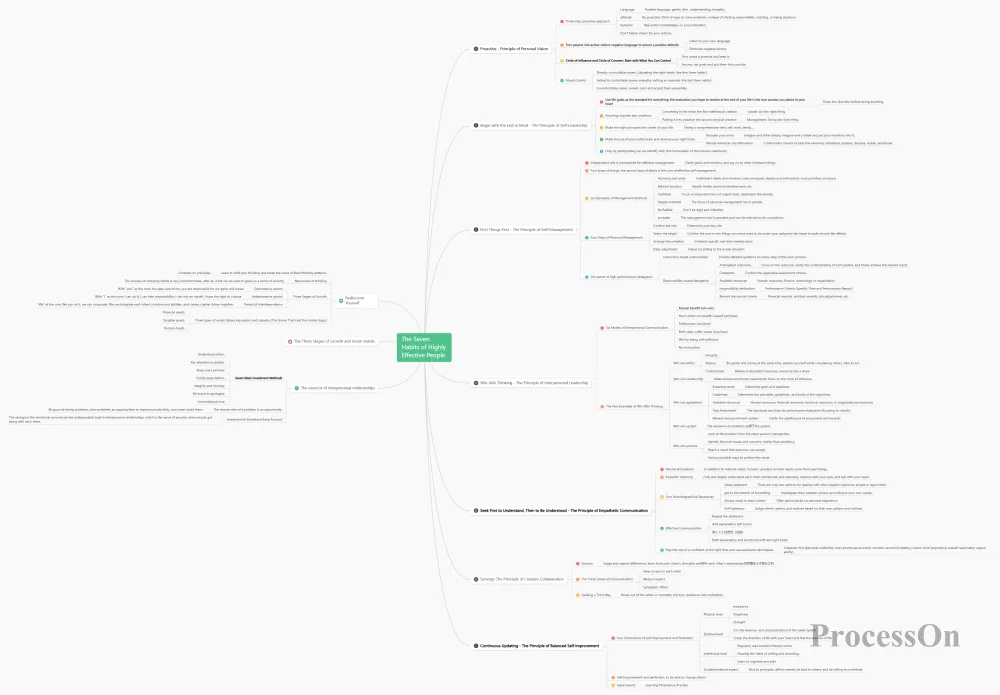
The Seven Habits of Highly Effective People
Habit 1 : Proactive, personal vision principle. We are the protagonists of our own lives. Proactive people focus on the circle of influence, concentrate on doing what they can do, and expand the circle of influence. Passive people, on the other hand, focus on the circle of attention, focusing on the weaknesses of others, environmental problems, and things beyond their personal capabilities.
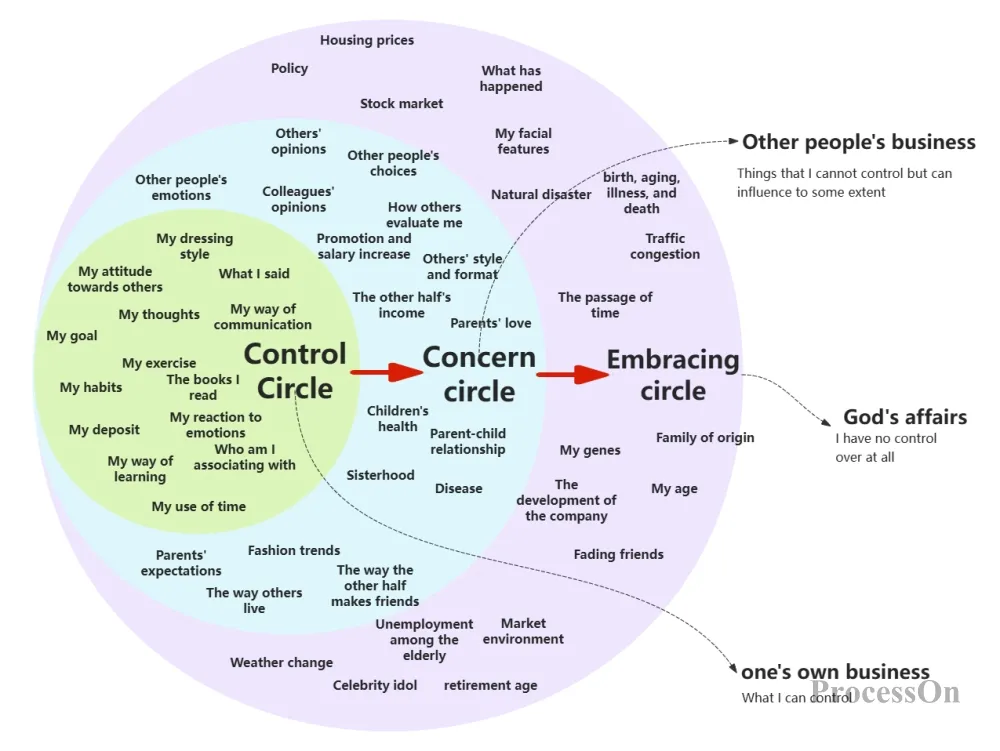
The Onion Model of Life Control
Habit 2 : Begin with the end in mind, the principle of self-leadership. Beginning with the end in mind requires us to first identify the direction before doing anything. This will not only allow us to have a clear understanding of the current situation, but also prevent us from going astray and wasting our efforts in the process of pursuing our goals.
Habit 3 : First things first, the principle of self-management. First things first means doing the most important things first. Importance is related to goals. Anything that is valuable and conducive to achieving personal goals is a priority. Most people tend to respond immediately to urgent matters, but not to urgent matters. Therefore, self-control and initiative are more needed to deal with urgent matters.
Habit 4 : Win-win thinking, the principle of interpersonal leadership. Win-win people see life as a stage for cooperation, not a battlefield. Win-win thinking requires you to be not only gentle, but also brave and fearless. To do this, to find a balance between daring to act and being considerate, is true maturity, which is the basis of win-win.
Habit 5 : Knowing others and understanding yourself, the principle of empathetic communication. In interpersonal communication, the most important thing is to understand the other person and show your true self. By knowing yourself and others and communicating effectively, we build a harmonious interpersonal bridge.
Habit 6 : Synergy, the principle of creative collaboration. Synergy means that the whole is greater than the sum of its parts, that is, the relationship between the parts is also an integral part of the whole.
Habit 7 : Continuously update and balance the principle of self-improvement. The most worthwhile investment in life is to hone yourself. In order to improve efficiency, we must regularly hone our skills at four levels: physical, spiritual, intellectual, and social/emotional.
Habits 1 to 3 are about success in the personal field; Habits 4 to 6 are about success in the public field; and Habit 7 is about self-improvement and perfection. Many companies ask their employees to read this book, draw mind maps and take notes, and write reviews, which shows its value and influence.
Why do we often say "habits change destiny"? Because 40% to 50% of a person's behavior depends on unconscious habits. If you want to develop a good habit or change a bad habit, you must first understand how habits are formed.
In the book Atomic Habits, James Clear, a famous American habit research expert, divides the formation of a habit into four steps: prompt → desire → response → reward. The prompt triggers the desire, the desire stimulates the response, and the response provides the reward that satisfies the desire and is ultimately associated with the prompt.
Correspondingly, he summarized four laws for cultivating habits: make it obvious, make it attractive, make it easy, and make it enjoyable.
The first law: Make it obvious. This law reminds us to set up an environment conducive to good habits and connect the habits to be developed with the clues or prompts that already exist in our daily lives. For example, if you want to develop a habit of exercising in the morning, you can put your sportswear at the head of the bed so that you can see it when you get up in the morning to remind you to exercise; or use habit stacking strategies, such as "After I brush my teeth, I will do 10 squats" to connect new habits with old habits.
The second law: Make it attractive. We can make habits more attractive by tying them to preferences. For example, if you want to develop a habit of reading, you can combine reading with enjoying a favorite drink so that you can enjoy a good drink every time you read, making reading more attractive.
The third law: Make it easy. This law emphasizes reducing the effort and time required to start a habit. For example, if you want to develop a writing habit, you can start by writing only one or two sentences, or set a timer for two minutes and practice writing in such a short time. This makes the habit easy to start and does not make people feel stressed.
Law 4: Make it pleasurable. When a habit brings immediate gratification, we are more likely to stick with it. For example, after completing a task, give yourself a small reward, such as a break or a snack. This immediate positive feedback can strengthen the persistence of the habit.
"Atomic Habits" is an action guide that systematically and in-depth teaches people how to develop good habits and get rid of bad habits. If you have in-depth research ideas on how to develop good habits and get rid of bad habits, you can take a look at this book. Below I share the complete version of the reading notes with you.
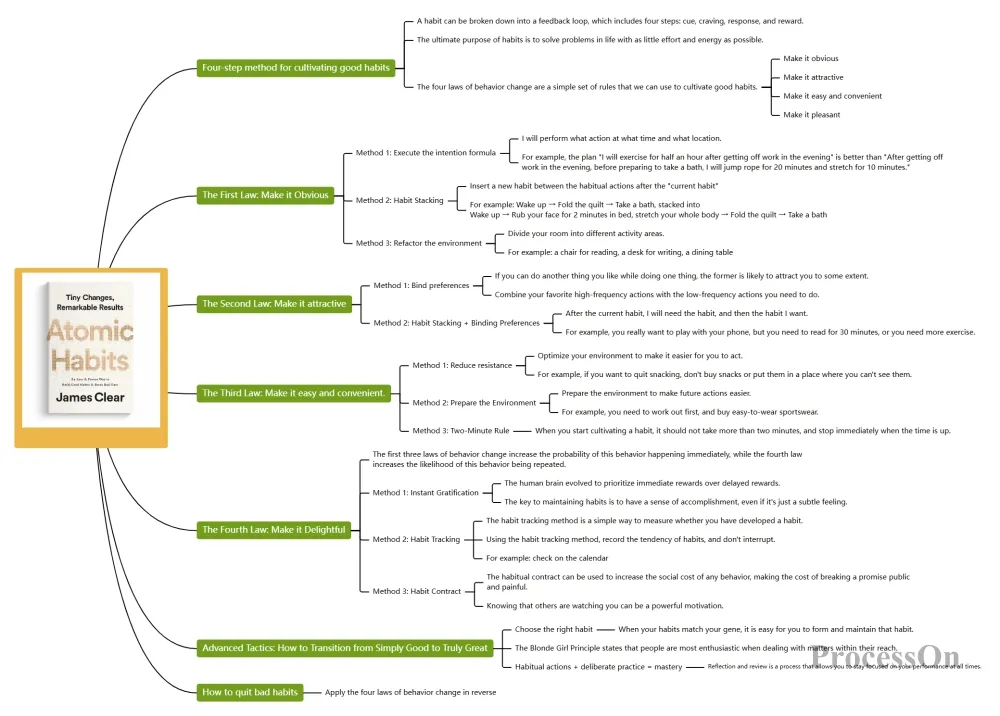
Some friends asked, now that we know how to develop a good habit, how do we get rid of a bad habit? It’s very simple, just apply the four laws of behavior change in reverse!
In the book "Fogg Behavior Model", Dr. Fogg personally disassembled the Fogg Behavior Model he proposed, revealing the three key elements that drive all human behaviors: motivation, ability and trigger , analyzing the important role of each element in driving human behavior, and providing effective methods to stimulate each element to better promote behavioral change. In addition, he also gave two methods to make the Fogg Behavior Model work better: designing behaviors by designing emotions, and letting small changes grow naturally by creating high-frequency small successes.
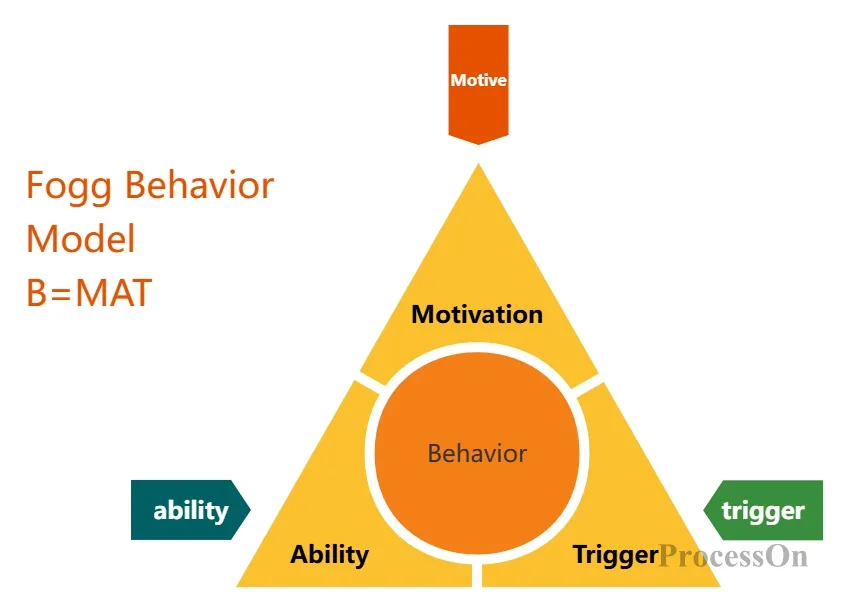
Fogg behavioral model triangle model b=mat
This book can not only help people develop good habits effortlessly, but also guide people to successfully fight bad habits; it can not only help individuals achieve change, but also help groups face challenges. As long as you grasp the essence of Fogg's behavioral model and apply it flexibly, everyone can easily change their work and life and become the person they want to be.
This book also provides Fogg's behavioral design toolbox, which includes 15 life scenarios and challenges, 300 micro-habit formulas, and 100 ways to celebrate. It teaches you how to lose weight, reduce stress, improve sleep quality, get rid of bad habits, and improve efficiency...
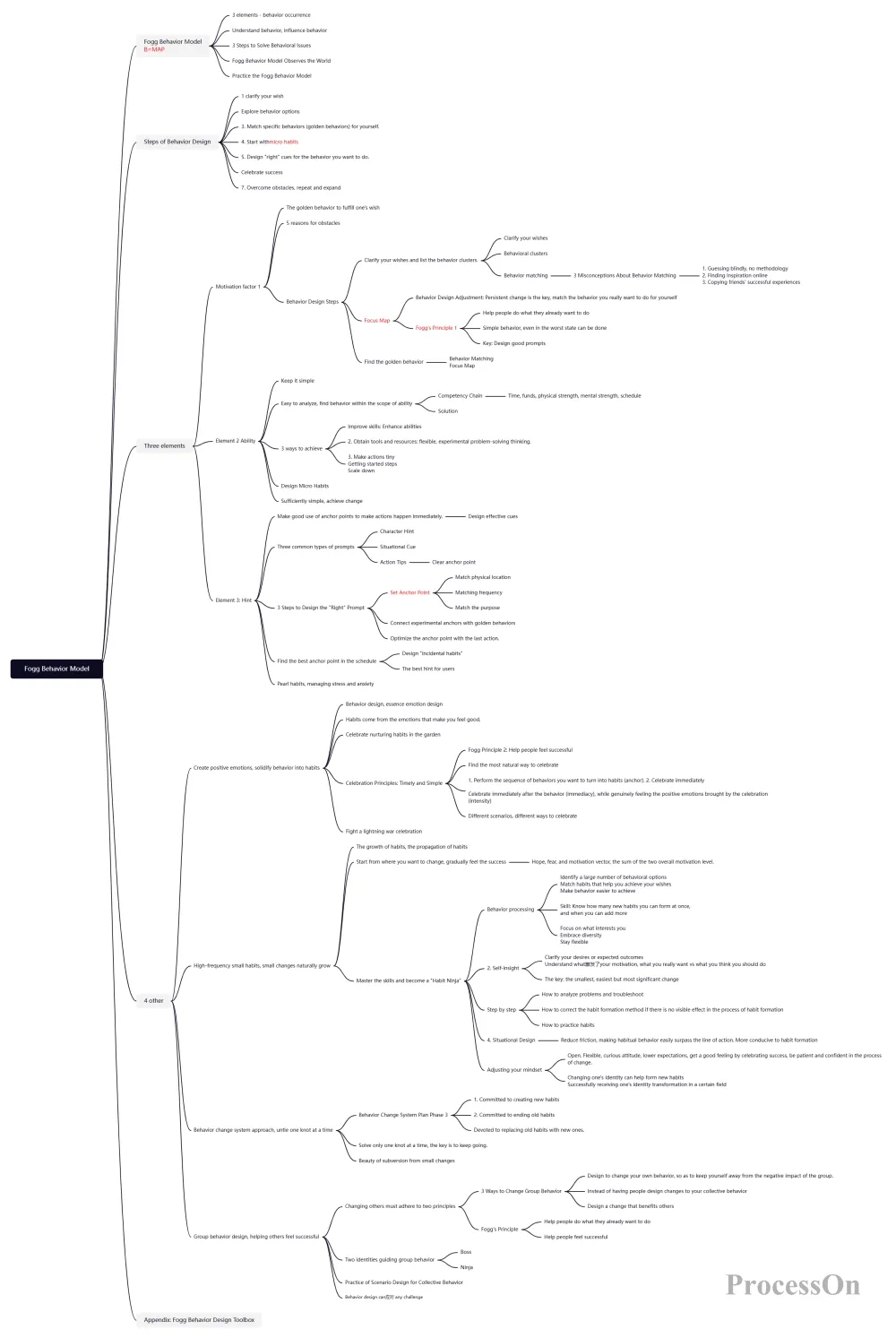
The use scenarios of Fogg's behavioral model are extremely rich! Whether you want to do self-media, manage family life, exercise and lose weight, or cultivate user usage habits, this thinking framework is very practical and effective.
The term "rich habits" was coined by Thomas Corey, who spent five years studying the daily habits of 177 self-made multimillionaires and 128 poor people, and found that a person's daily habits can reveal whether that person can succeed in life.
The book is divided into two parts. The first part tells the importance and infinite possibilities of rich habits through representative cases of several ordinary employees in various industries who went from poverty to wealth; the second part systematically analyzes rich habits and poor habits, and provides effective ways to change and cultivate habits.
A person's habits can be changed and cultivated. Everyone has the opportunity to become a multi-millionaire. The key lies in whether you are willing to develop wealthy habits.
The book shares many habits of rich people that are worth learning. There are 26 habits in summary. You can choose a few habits to cultivate first according to your personal needs .
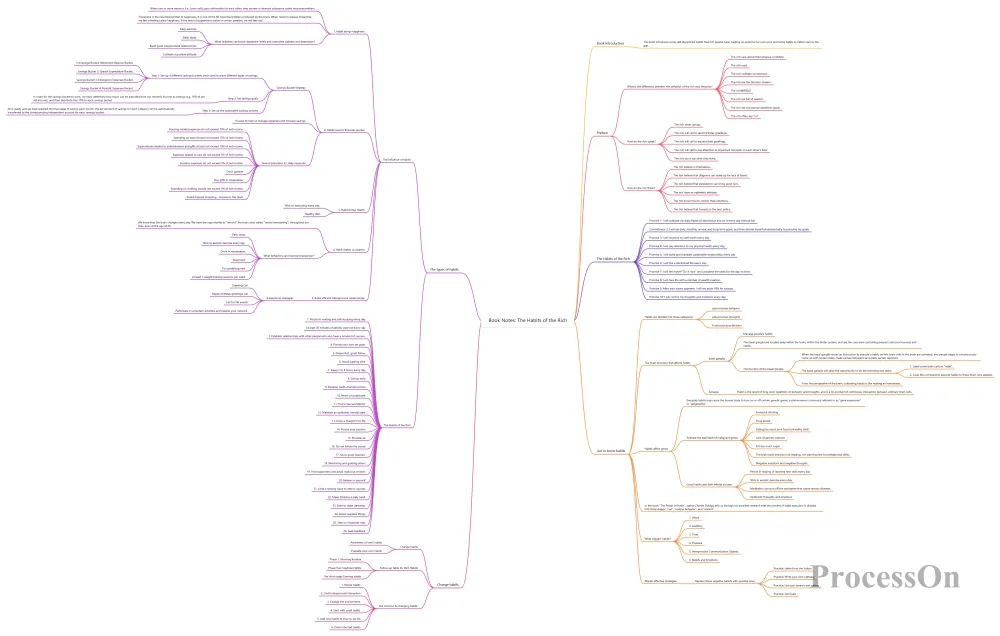
The main idea conveyed by this book is that by practicing rich habits, we can gradually shape a better self. If you want to be someone, imitate him first. "If you believe that you are smart, you will become smart; if you think that you are incompetent, you may become incompetent. Our life state is determined by our beliefs."
In this rich list of habits, there are many good habits that everyone has decided to develop , such as reading every day, doing aerobic exercise for at least 30 minutes a day, getting up early, etc., but how many people actually do it?
Success is never easy , it is difficult and long, so don't ignore the development of a good habit, and don't ignore the destructiveness of a bad habit to your life. Atomic Habits says: In the long run, the quality of our life often depends on the quality of the habits we maintain. Good habits make time your ally, while bad habits make time your enemy.
In short, each of us needs to develop some important habits, and the rest is up to fate. As for what kind of habits you should develop, what kind of state you should live in, and what kind of life order you should establish, it is your own choice and should not be decided by others. The most important thing is that as long as you enjoy it and are happy!